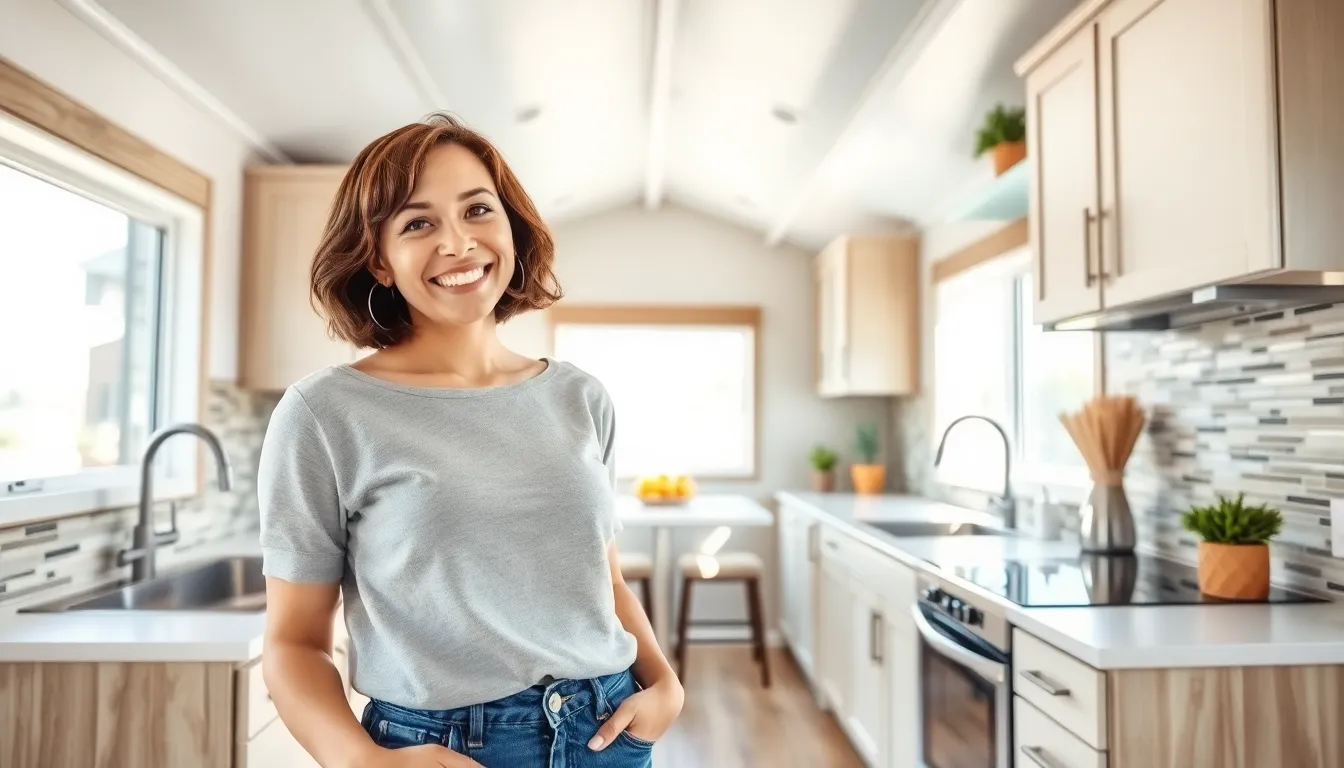Buying a home is a big deal, especially when that dream house comes with a price tag of $300,000. But before anyone can start picturing their future BBQs and cozy movie nights, there’s the not-so-small matter of a down payment. It’s like the entry fee to the homeownership party, and trust us, you don’t want to show up empty-handed.
So, how much should one save for that down payment? Spoiler alert: it’s not just a simple math problem. Depending on the loan type and personal financial situation, the amount can vary wildly. But don’t worry! With the right info and a sprinkle of humor, navigating this financial maze can be a lot less daunting. Let’s break it down and help turn that $300,000 house into a reality, one dollar at a time.
Table of Contents
ToggleUnderstanding Down Payments
Down payments serve as an essential component of the home-buying process. A buyer’s initial investment reduces the loan amount and demonstrates commitment to lenders.
What Is a Down Payment?
A down payment represents the portion of the home’s purchase price paid upfront. It typically ranges from 3% to 20% of the total price. For a $300,000 house, a down payment might fall between $9,000 and $60,000. Lenders often use this amount to assess the buyer’s financial stability. Options exist, including conventional loans and government-backed programs. Each loan type may have specific down payment requirements, influencing overall mortgage costs.
Importance of a Down Payment
Making a down payment significantly impacts mortgage terms. A larger down payment often results in lower monthly payments and less interest paid over time. Buyers may also avoid private mortgage insurance (PMI) if they invest 20% or more. Securing favorable loan terms becomes easier with substantial upfront equity. Saving for the down payment boosts financial discipline and prepares buyers for homeownership. Homeowners may also gain a stronger negotiating position by showing serious intent through their down payment.
Calculating the Down Payment on a 300K House

Understanding the down payment on a $300,000 house requires clarity on various factors, including percentage options and overall costs. Financing a home comes with specific calculations that potential buyers should grasp.
Common Down Payment Percentages
Down payments commonly range from 3% to 20%. Choosing a conventional loan often leads buyers to consider a 20% down payment, equating to $60,000. A lower down payment of 3% translates to $9,000, which may appeal to first-time homebuyers prioritizing accessibility. FHA loans may also offer 3.5% down payment options, creating flexibility for buyers. Understanding these percentages helps buyers assess their financial readiness effectively.
Total Cost Breakdown
Examining the total cost breakdown aids in financial planning. For a home priced at $300,000, adding closing costs of around 2% to 5% is common. This could mean an additional $6,000 to $15,000. Including home inspections and potential repairs further impacts the overall budget. Buyers should consider property taxes and homeowner’s insurance, which can also affect monthly expenses. Properly evaluating these elements ensures a comprehensive view of the financial commitment associated with purchasing a home.
Financing Options for a 300K House
Homebuyers can explore various financing options when considering a $300,000 house. These options cater to different financial situations and goals.
Traditional Mortgages
Traditional mortgages often require a down payment between 5% and 20%. Buyers opting for a 20% down payment face a $60,000 upfront cost, but this choice could yield benefits such as favorable interest rates. Lenders typically favor applicants willing to invest more on initial payments, perceiving them as lower-risk borrowers. Monthly payments start to reduce significantly with a larger down payment, enhancing overall affordability. Buyers planning to use a traditional mortgage must also ensure their credit score stands above 620, securing better terms and interest rates.
Government-Backed Loans
Government-backed loans provide accessible financing alternatives for those purchasing a $300,000 home. FHA loans, for instance, allow down payments as low as 3.5%, translating to approximately $10,500. VA loans offer veterans and active service members the possibility of zero down payment. These options facilitate homeownership for individuals who may struggle to save large amounts. Government programs often include competitive interest rates and reduced mortgage insurance costs, further promoting affordability. Eligibility varies, so prospective buyers should research requirements based on their circumstances.
Strategies to Save for a Down Payment
Saving for a down payment on a $300,000 home requires careful planning and strategic approaches. Several techniques can help streamline the process.
Budgeting Techniques
Creating a detailed budget remains essential. Three key categories should be included: fixed expenses, variable expenses, and savings goals. Monitoring spending habits helps identify areas for reduction, enabling more funds for the down payment. Setting up a separate savings account specifically for the down payment promotes discipline. Automating monthly transfers into this account encourages consistent saving.
Assistance Programs
Many assistance programs exist to support homebuyers. First-time buyers can benefit from state and local programs offering grants and low-interest loans. Programs like the FHA loan provide options for down payments as low as 3.5%, significantly easing the financial burden. Additionally, some employers offer homebuyer assistance as part of their benefits package, providing further financial resources. Exploring these options creates additional pathways to homeownership while easing the savings process.
Navigating the down payment process for a $300,000 house is a vital step toward homeownership. Understanding the implications of different down payment amounts can empower buyers to make informed decisions. Whether opting for a lower percentage or aiming for a larger investment, each choice carries its own benefits and challenges.
By implementing effective saving strategies and exploring available financing options, prospective homeowners can find pathways to achieve their goals. With careful planning and the right resources, the dream of owning a home can become a reality.





